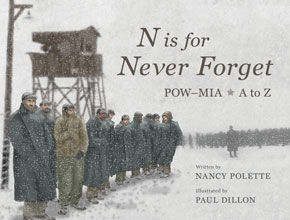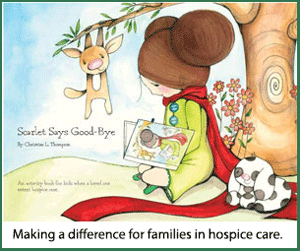When Michelle Anders’s military family moved from Hawaii to Georgia, her six-year-old daughter had to change schools in the middle of the school year. Michelle was concerned about the impact the transition might have on her little girl.
“I was very worried that my daughter would not fit in and wouldn’t have any friends,” says Michelle. “This was the first time we moved with a school-aged child. It added so much more to my plate and my anxiety.”
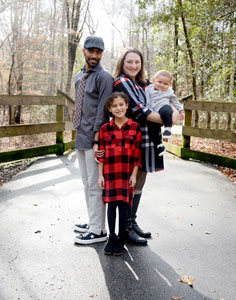
Active-duty military families like Michelle’s move about every two to three years. The Department of Defense Education Activity estimates that students in military families move up to nine times from preschool to high school graduation.
Active-duty military families like Michelle’s move about every two to three years. The Department of Defense Education Activity estimates that students in military families move up to nine times from preschool to high school graduation. Though less than one percent of American citizens serve in the U.S. military, the scope of those affected by their commitment is much larger. According to the Department of Defense, there are approximately 1.9 million military-connected children spread across communities the world over.
While the impact of military life is global, Michelle says support for school transitions starts closer to home, when parents and teachers proactively support their students. An army spouse and a special education teacher at Harnett County Schools near Fort Bragg, North Carolina, Michelle found helpful insights in Seasons of My Military Student: Practical Ideas for Parents and Teachers, coauthored by two military spouses.
“This book is like a manual for anyone who lives or works with military kids,” says Michelle.
Seasons of My Military Student stresses the importance of a supportive team and community for military-connected students. With the right tools and support, the coauthors say, students can flourish even while adjusting to frequent moves, deployments and other unique challenges of military life. The book includes tools and strategies geared for parents and teachers of military-connected children.
“Military parents have long recognized the effects of military life on their children and their children’s education,” says coauthor Amanda Trimillos, a teacher, as well as military wife and mom.
“Parents and teachers are the boots on the ground when it comes to military kids and educational transition,” says coauthor Stacy Allsbrook-Huisman. “We write about ways the parent and school and can work together to support the student in each season to prevent problems before they start, academically, socially, and emotionally.”
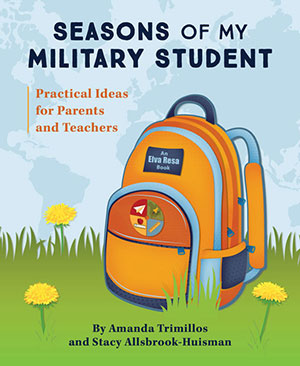 Seasons of My Military Student breaks down a student’s transition experience into four Seasons of TransitionTM: Season of Leaving, Season of Arriving, Season of Growing, and Season of Thriving. These seasons may or may not align with the school calendar, depending on when a military member receives orders to move.
Seasons of My Military Student breaks down a student’s transition experience into four Seasons of TransitionTM: Season of Leaving, Season of Arriving, Season of Growing, and Season of Thriving. These seasons may or may not align with the school calendar, depending on when a military member receives orders to move.
“Military orders don’t follow the school year,” says Amanda. “In our book, we don’t follow the school year, we follow the student.”
Air Force veteran and spouse of twenty-two years, Jesse Chang, says the book was helpful to her when she and her family moved from Germany to Florida. Jesse especially appreciated the chapter about helpful tools, including the Interstate Compact on Educational Opportunity for Military Children. The Compact is governed by the Military Interstate Children’s Compact Commission, or MIC3.
“I was not really familiar with the compact prior to reading the book,” says Jesse. “I heard the acronym (MIC3) but didn’t realize what it was and how important it is.”
Valid in every state and in Department of Defense Education Activity schools worldwide, the Interstate Compact was created to address the unique challenges faced by military-connected students. Compact provisions address the differences between states and districts regarding enrollment requirements, class placement, special services, graduation requirements, deployment-related absences, and more. For example, it allows military families to hand-carry student records when moving to a new school and allows excused absences related to deployment or homecoming.
In their book, Stacy and Amanda explain that the compact is intended to give military-connected students the same opportunities as their civilian classmates. The coauthors outline other tools and strategies to create better school transitions, including how to recognize problems and determine the causes. A student’s academic struggle after a move or during deployment, for example, may have social or emotional components.
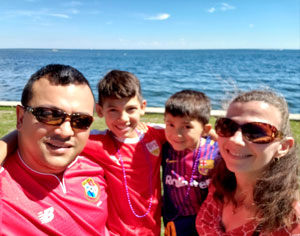
Air Force veteran and spouse of twenty-two years, Jesse Chang says the book was helpful to her when she and her family moved from Germany to Florida. She especially appreciated the chapter about the Interstate Compact, which address the differences between states enrollment requirements, class placement, special services, graduation requirements, and more.
“The majority of my (military-connected) students seem to transition fairly well,” says Michelle of her teaching experiences, “but it is difficult to really know how they are, as they may be non-verbal.”
She says the guidance in Seasons of My Military Student helped her know what behaviors and signals to look for when students are having difficulty adjusting to a move or a parent’s deployment.
“I’ll give some extra hugs and better understand causes of behavior,” she says, adding that she uses many strategies in the book in her classroom. “We send care packages as a class if a parent is deployed. Military parents find some comfort when they realize I’m a military spouse and understand how that life works.”
Support from the school and community is important to military-connected students, Michelle says. As a parent, she appreciates strategies used at her daughter’s school, including a counseling program that provides one-on-one attention to military kids.
“My daughter enjoyed it,” she says. “That program really helped her bloom where she’s planted, if you will.”
In their book, Stacy and Amanda emphasize the importance of a team approach to supporting military students. The student-advocacy team is formed by parents, educators, and the student. As well as academic support, the team guides the student toward supportive peer groups and belonging.
“I really took that idea to heart,” says Michelle. “Since I was very worried about my daughter socially, I made sure to ask if there was a peer group she could join. I don’t think I would have thought of that if I hadn’t read about it in the book.”

As a communication specialist for Florida’s Hillsborough County Public Schools, which serves students connected to MacDill Air Force Base, Kim Sukach gives copies of Seasons of My Military Student to military families new to the area.
Kim Sukach works for Florida’s Hillsborough County Public Schools, which serves students connected to MacDill Air Force Base in Tampa. As a communication specialist, Kim is often the initial point of contact for military families new to the district. She gives copies of Seasons of My Military Student to those families and others who could benefit from the ideas and strategies within the book.
Kim works very closely with the school liaison officer at MacDill, helping military families find school options that meet the needs of their students. Each military installation has a school liaison officer to assist and inform military families on school-related issues.
Empathy and understanding of military-connected kids is important, says Kim. She doesn’t have any personal military experience, and she says reading Seasons of My Military Student gave her better insight into the culture.
“Most of these kids come from smaller military installations when they come here,” Kim says. “Making friends and fitting in is hard. Academics are one thing, but if they don’t have that one friend, they’re not going to be able to focus on academics. Everyone needs that one person.”
With the right support, military-connected kids can thrive, she says. She’s seen success stories among military-connected children, including a recent high school valedictorian in the Hillsborough district.
“She was a military-connected student who transferred into the school system at the beginning of her senior year,” says Kim, “and this school was the fourth school of her high school career.”
Dennis Osbourne also says empathy is important, an awareness of the individual impact of transition. An English teacher at Ramstein Middle School, a DODEA school in Germany, Dennis has watched US military-connected students come and go since 1989. He says it’s easy to assume that military kids take moving in stride, because they do it so often.
“We teachers sometimes take it for granted that the students are pros at moving and adjusting,” he says. “We teachers get so busy. We’re not always empathetic. When a student brings her withdrawal paperwork in the middle of a lesson, our default is to be a bit impatient and fill it out hurriedly. Because of reading (Seasons of My Military Student), I keep my eye out for students who will be leaving, try to have conversations with them about it ahead of time, and do some sort of class goodbye.”
In their chapter on the Season of Leaving, Stacy and Amanda emphasize the importance of a healthy departure and giving students and teachers opportunities to say goodbye.
“Students who are with me all year get a personal heartfelt blessing letter from me,” Dennis says. “Now, I’m making more of an effort to do that for students who leave during the year too.”
As a middle school teacher, Dennis sees the effect frequent transitions have on this emotionally fragile age group, even if they don’t always know how to express their feelings.
“Students often do not display how stressful a move is,” he says. “Middle school students especially are moving from parental to peer influence as a huge factor. Having and making friends has got to be the biggest challenge for them.”
He adds, “The book helps us teachers put ourselves in the position of those military kids, and it helps the parents be aware as well how challenging and also how promising transitions can be.”

Military spouse Elizabeth Castro teaches English for speakers of other languages for DODEA in Okinawa, Japan where she sees the effects of transitions on students and on her own military children.
Military spouse Elizabeth Castro teaches English for speakers of other languages for DODEA in Okinawa, Japan where she sees the effects of transitions on students and on her own military children. She says the book is a resource she refers to for herself and shares with others in the education community, especially after seeing her own children’s reactions to moving.
“When we arrived in Okinawa,” she says, “my oldest hit the ground running, while my youngest had a hard time accepting that we were in Okinawa. The strategies in the book for the Season of Arriving, the conversations and tips would have helped. At the time, all I could focus on was the fact that my youngest was sad and not his usual happy self.”
Elizabeth and her family are already in their next Season of Leaving, and now she says they are better prepared for the move, with checklists and strategies from the book.
“Our oldest will be headed to college, and the youngest is going to high school,” she says. “It’s such a whirlwind that you cannot think straight, and the book has it all laid out.”
One strategy for the Season of Leaving is the teacher-to-teacher letter, a message about the student from a sending teacher to the receiving teacher. The letter introduces the student’s abilities, needs, and personality to the teaching team. As a teacher, Michelle Anders calls this concept a game-changer.
“You can look at school records all day and get a snapshot of the student’s capabilities,” she says, “ but when you read a personal letter from the previous teacher, it’s a much more thorough, deeper understanding of what the child can do, especially when my students with special needs may or may not be able to tell me themselves.”
Michelle says she feels fortunate to wear both hats as a parent and a teacher of military-connected children.
“I understand both worlds,” she says, “but I am still learning as I go. Having a school-aged child totally changes the experience when moving. Every stage of life has its challenges.”
Michelle says reading Seasons of My Military Student changed the way she handled moving with her daughter.
“Before, I just did it all myself. I didn’t really think about including her in the process,” she says. “Now I try to always keep it positive, but I keep it real. I assure my daughter that she’s moving away from friends, but she also has a chance to make new ones. I let her in on the house hunting process, I tell her about the new state and what kinds of things are there. I also visit the school with her before school starts, so she has an idea of where she is going and what it’s like. I try to be supportive and let her take the lead on her feelings, and I listen. From there I just try to be patient and support her in whatever way she needs.”
Amanda and Stacy say they hope Seasons of My Military Student informs parents, teachers, schools, and communities about the kinds of support military-connected student need. With the right support structures and strategies in place, they say, military-connected students have the tools to build resiliency and thrive in every season.
Seasons of My Military Student: Practical Ideas for Parents and Teachers
Hashtags: #SeasonsofMyMilitaryStudent #SeasonsofTransition
Web: SeasonsofMyMilitaryStudent.com
Facebook (public page): SeasonsofMyMilitaryStudent
Facebook (closed group): Seasons of My Military Student Parent & Teacher Group K-12
Twitter: @SeasonsofMilkid
Instagram: @SeasonsofMyMilitaryStudent
Buy on Amazon
Buy (in bulk): MilitaryFamilyBooks.com
Seasons of My Military Student received a gold medal in the IBPA Benjamin Franklin Awards and the Military Writers Society of America Book Awards.
Feature photo: Elizabeth Castro and family
Laura Martin is a military spouse, parent, teacher, and writer who recently relocated from Hawaii to a rural military community in Louisiana.
This article was first published November 2019.


